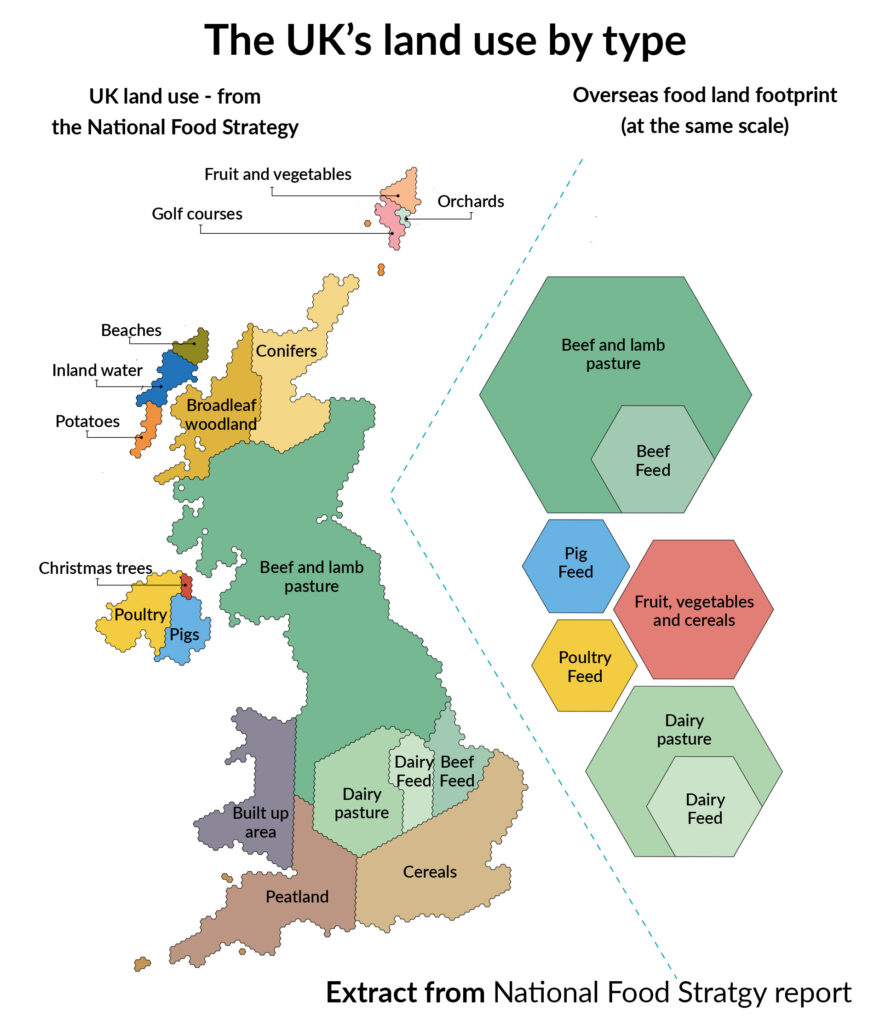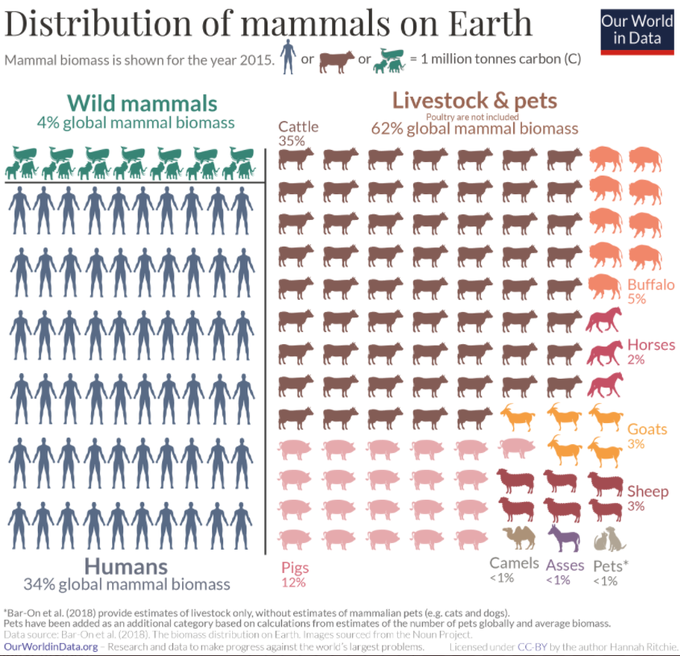Following is a collection of graphics, some of which appear in our Ambition Gap report which has been sent to all MPs and to active Peers.
The majority have been produced by Zero Hour, but we have also shared some of our favourite graphics from external sources.
Please feel free to download and share any of these on social media etc with appropriate credits.
If there is a graphic you think we should add to this page, please contact [email protected].
The Ambition Gap
Climate Change Committee is doing a great job highlighting the ‘Delivery Gap’. But even if we get emissions cuts back on target, our targets are out-of-date and far from sufficient for limiting warming to 1.5°C.
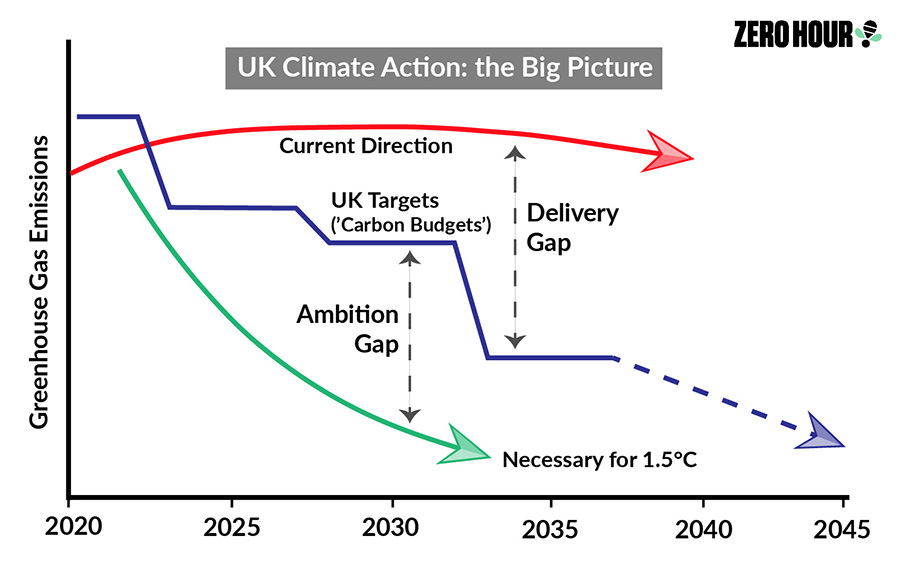
Ignoring over 40% of our carbon footprint
UK territorial emissions—those occurring on our own soil—have fallen by 46% since 1990. This is a great achievement. But when we look at our entire footprint, including imported emissions, the picture is less rosy: a reduction of only 18%. The UK’s carbon budgets only apply to our territorial emissions. We currently take no responsibility for the emissions from the goods we import, and there are no targets in place to reduce them.
From Zero Hour’s Ambition Gap report.
Sources: Territorial emissions from BEIS, Consumption-based emissions and UK share of international aviation/shipping from Global Carbon Project.
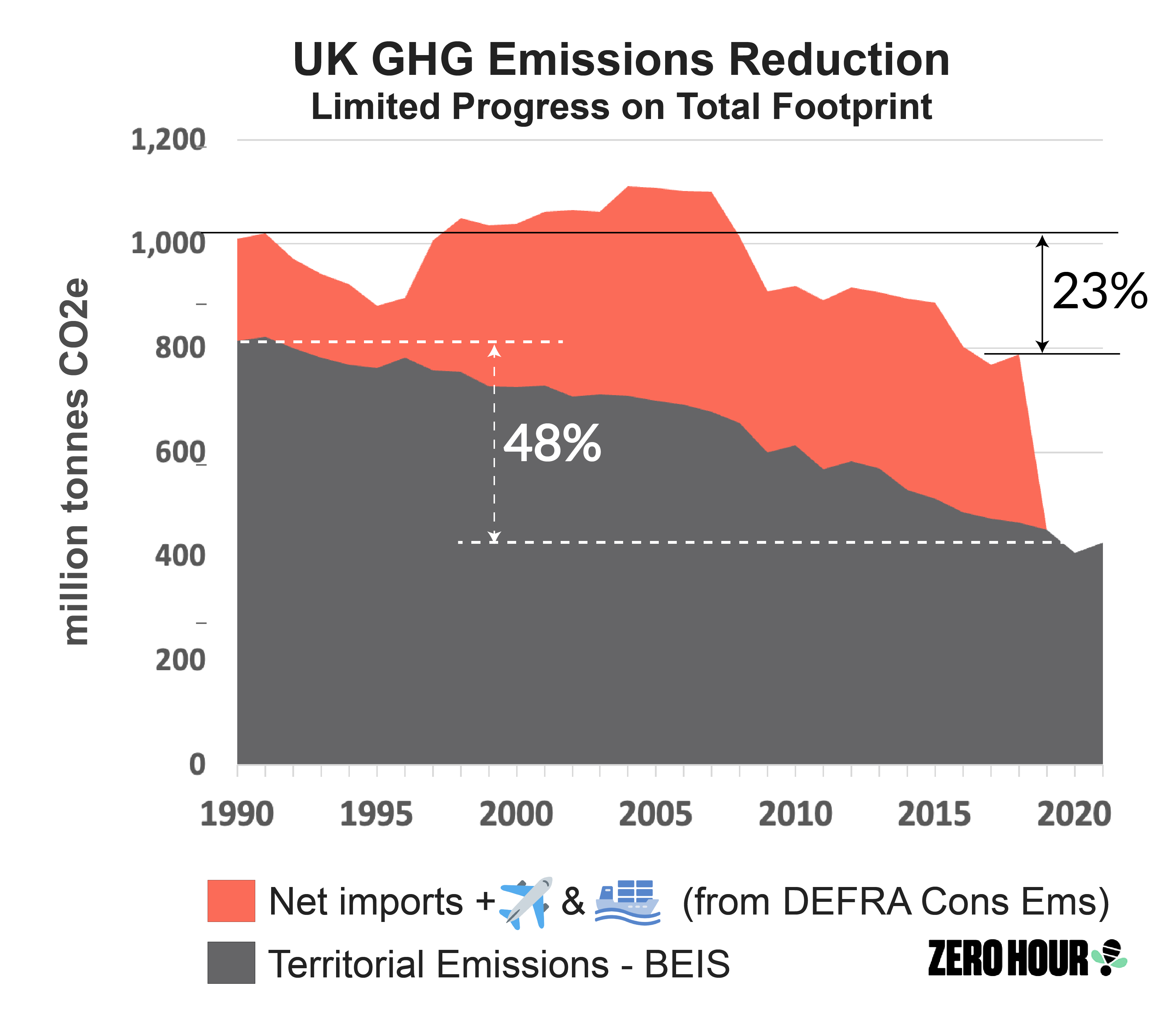
UK set to emit twice its share of the global carbon budget
The UN International Panel on Climate Change has estimated how much more CO2 the world can emit without exceeding the critical 1.5°C of warming. That is 400 billion tonnes, measured from 2020, or just under 50 tonnes per person sharing it out amongst the world’s population, and allowing for population growth. Based on the UK’s net zero strategy and its outdated inadequate targets, we UK citizens can expect on average to emit well over twice our 49 tonne share.
From Zero Hour’s Ambition Gap report – see calculation in Appendix.
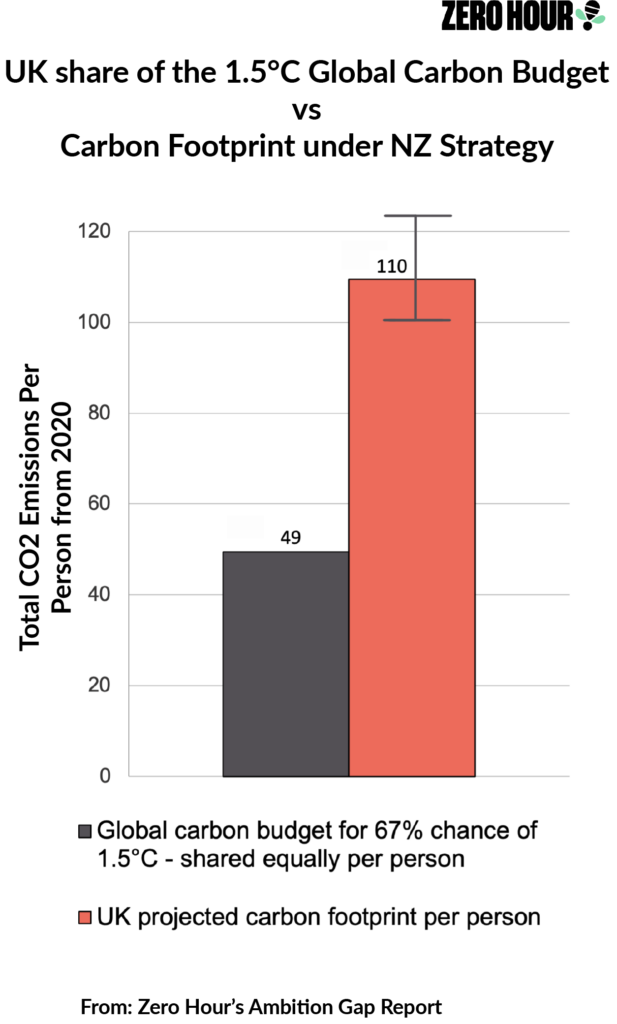
UK homes lose heat at 3 times the rate of German homes
The UK wastes a huge amount of energy needlessly. A graphic produced by heating controls company Tado, based on real data from a very large sample of 80,000 European homes. The £1,000 ECO home insulation grant applies only to low income families and is not universally available. The cap is also far too low. Insulation of older solid wall buildings can cost around £9,000 just for a semi-detached home. For comparison, Italy pays homeowners 110% of the cost to insulate and convert to a heat pump, with a cap of €100,000 per home. UK was making strong progress in resolving this issue in the early 2010’s but grants were ended. This needs renewed urgent Government attention.
Source: Tado.
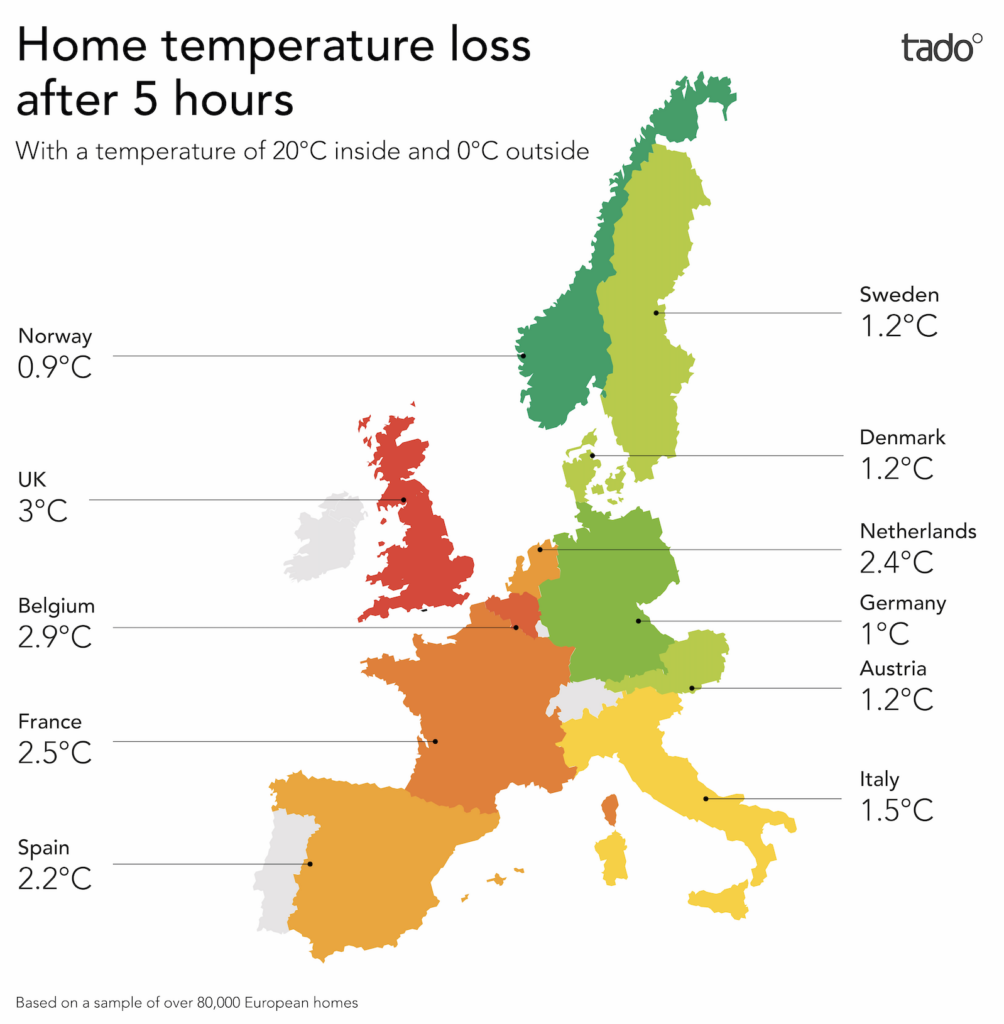
UK insulation installations
Visualisation since 2010 of UK insulation installations before and after UK Gov support withdrawn.
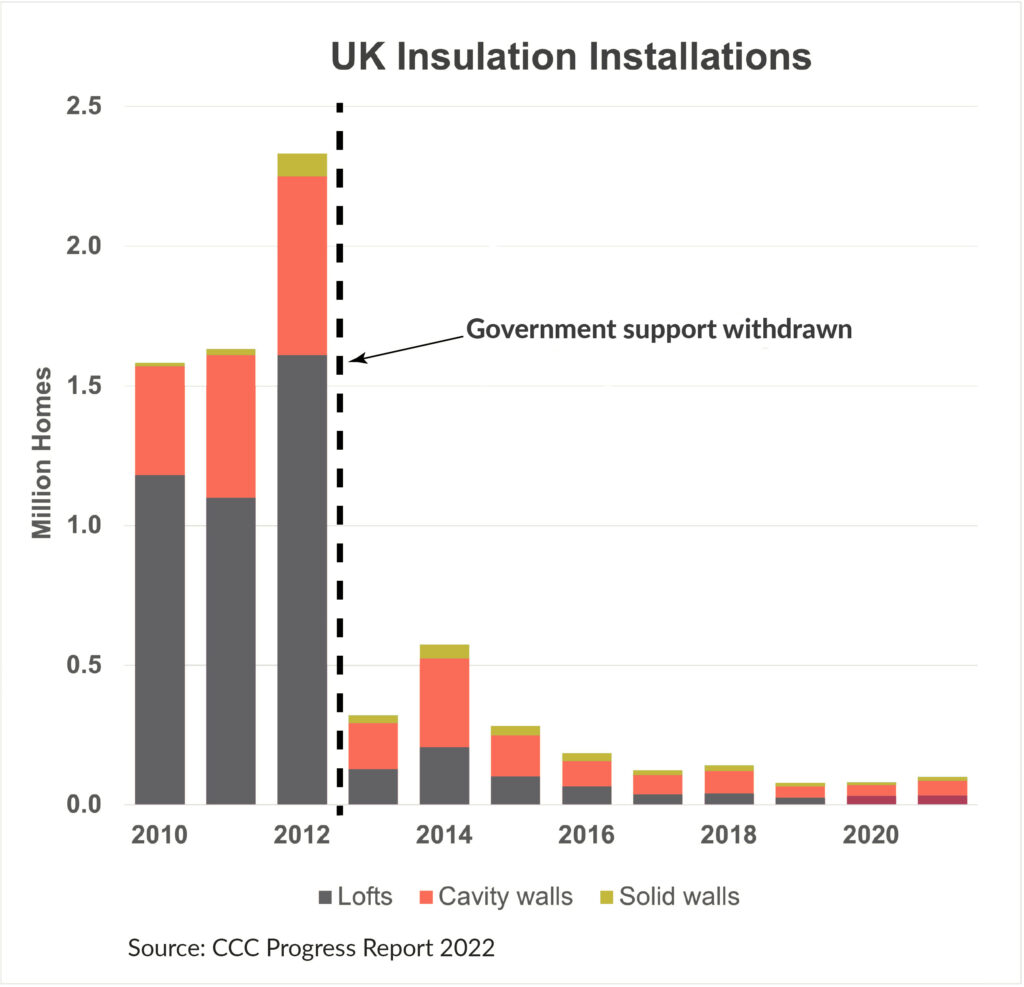
UK tree planting plans are far too unambitious
At the targeted rate of 30,000 hectares of new woodland per year, it will take over 8 years to increase UK woodland cover by just 1%. This is tiny incremental change. Friends of the Earth says the UK can find enough land to double tree cover. Rewilding Britain concurs and has published evidence that allowing woodland to regenerate naturally can be cheaper, much more rapid and more beneficial than afforestation. The report suggests that doubling the cover of woodland and “woodland in the making” from 13% to at least 26% within 10 years is achievable: “partly through a rapid expansion of the area where young woodlands are regenerating and growing into the natural forests”.
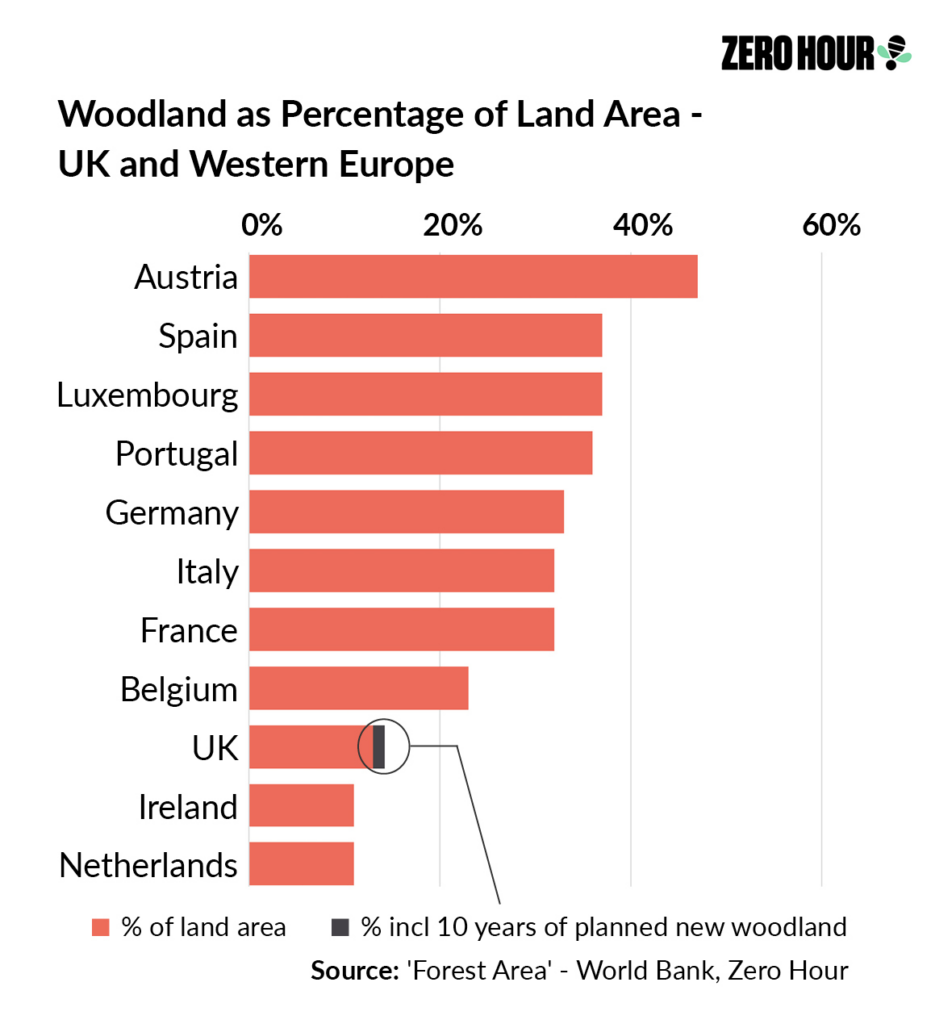
Huge tax hand-outs to fossil fuel companies
The UK taxpayer supports fossil fuels with £10 billion every year in tax breaks. This distorts the market, slowing the transition to green power and incentivising operators to extract the increasingly costly reserves that remain. The £10 billion in annual support includes tax relief for oil companies, incentivising exploration and helping boost profits. It also includes tax relief for industry and consumers (reduced VAT), lessening the incentive to move away from fossil fuels. The new Energy Profits Levy, will worsen the situation, with a provision that will see taxpayers give a tax hand-out to oil companies of £91.40 for every £100 invested. This rebate is not designed to incentivise investment in renewable power but in new oil and gas, against the explicit recommendations of the UN, the International Energy Agency and the Climate Change Committee. It is this kind of tax treatment that leads to major oil companies pay absolutely no tax at all – e.g. ‘Shell reveals another tax-free year in the North Sea‘.
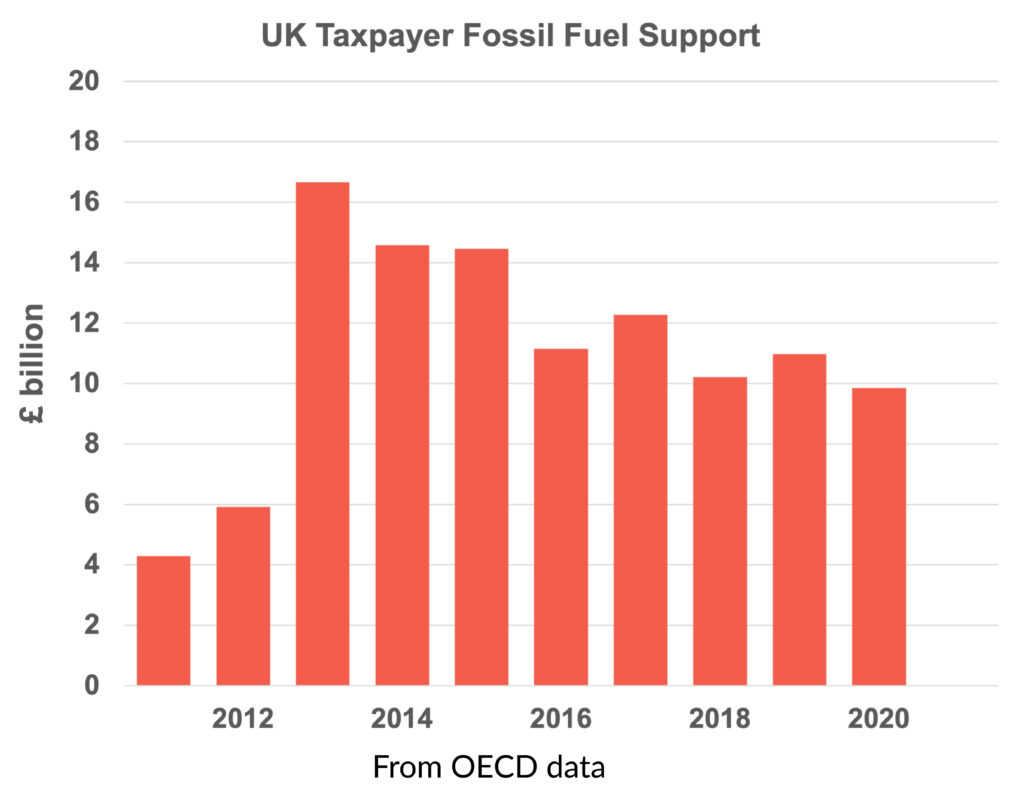
Multiple safe planetary boundaries have been breached
The UK Net Zero Strategy largely ignores Earth’s interconnected natural support systems: atmosphere, oceans, freshwater systems, land, soils and biodiversity. These vital systems provide our food, air, clean water and shelter. They also regulate the climate. Scientists at the Stockholm Resilience Centre have identified nine planetary boundaries that enable a ‘safe operating space’ for humanity—climate change being just one.2 We have now breached seven of the nine boundaries, including the limit for fresh water which puts the Amazon rainforest at serious risk. These boundaries are interwoven. Breaching one boundary impacts on others, risking dangerous, irreversible tipping points, with dire consequences, including the loss of the Greenland ice sheet—probably already inevitable—and the loss of the Amazon rainforest to savanna. Graphic from the Stockholm Resilience Centre.
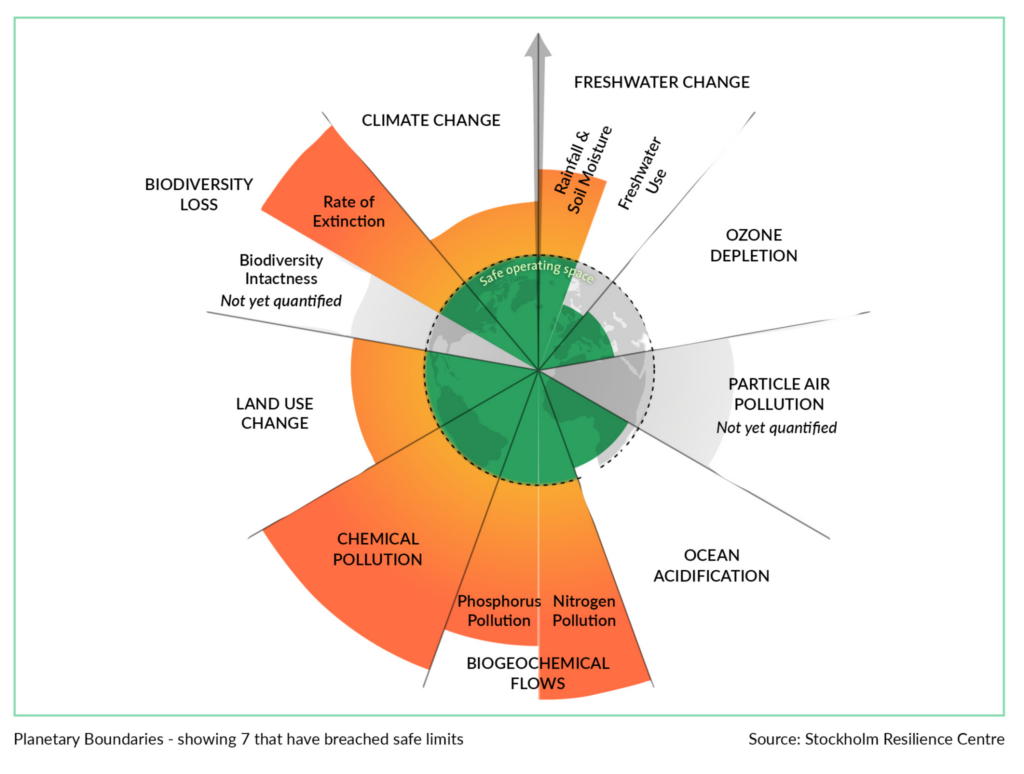
UK electricity prices are amongst the highest in the world
The science tells us that we must take rapid action to stop burning fossil fuels. In most cases, this means electrifying things. Electrification is by far the cheapest and most practical option for things like home heating and road transport. But UK electricity prices are really high, and this is hindering the transition. The UK privatised market model does not appear to be working well, something the Government must urgently address. Note that gas companies are lobbying hard to persuade the Government to use hydrogen for home heating, but independent studies show hydrogen is entirely inappropriate for this use. The main issue is that, due to losses in conversion, you need 6 times more renewable energy to create the hydrogen needed to heat a home compared to heating the same home with a heat pump.
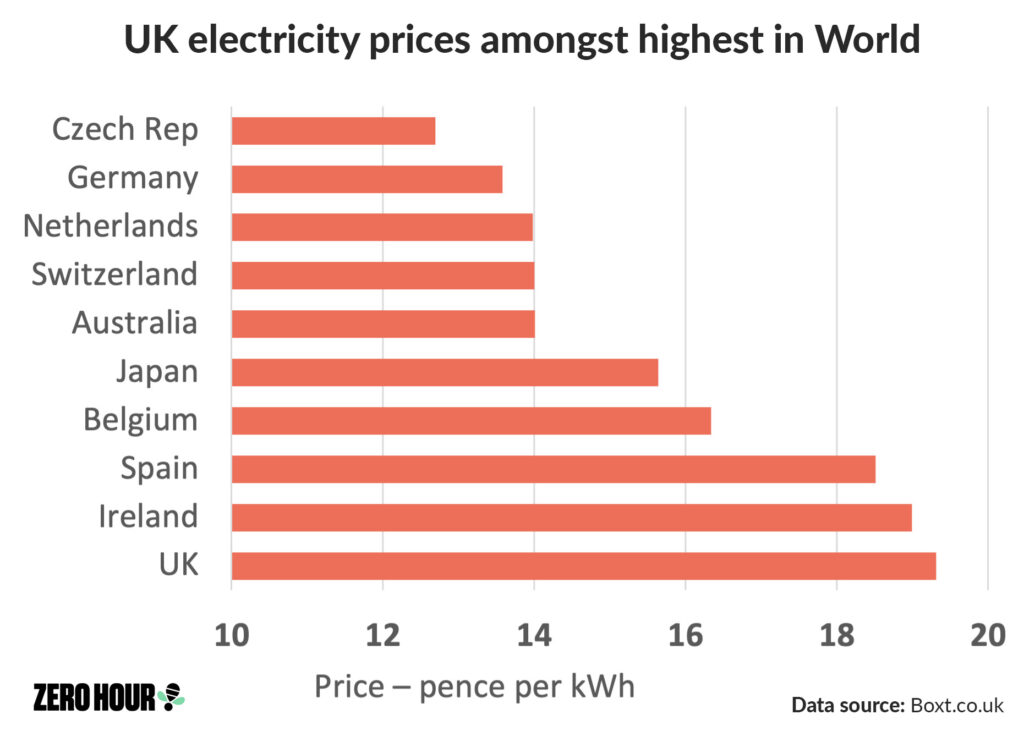
Moving in the wrong direction with renewables – solar
It is now around 9 times cheaper to construct new renewable capacity than it is to run our fossil fuel power stations. In the early 2010’s, the UK saw very promising rapid growth in capacity of renewables, but despite strong public support, Government brought in strict rules drastically reducing further capacity growth. Onshore wind capacity is developing well, but we need all forms of renewables if we are to head off environmental disaster. Government should note that there is strong support amongst Conservative voters. Please write to your MP on this.
Source: BEIS Energy Trends.
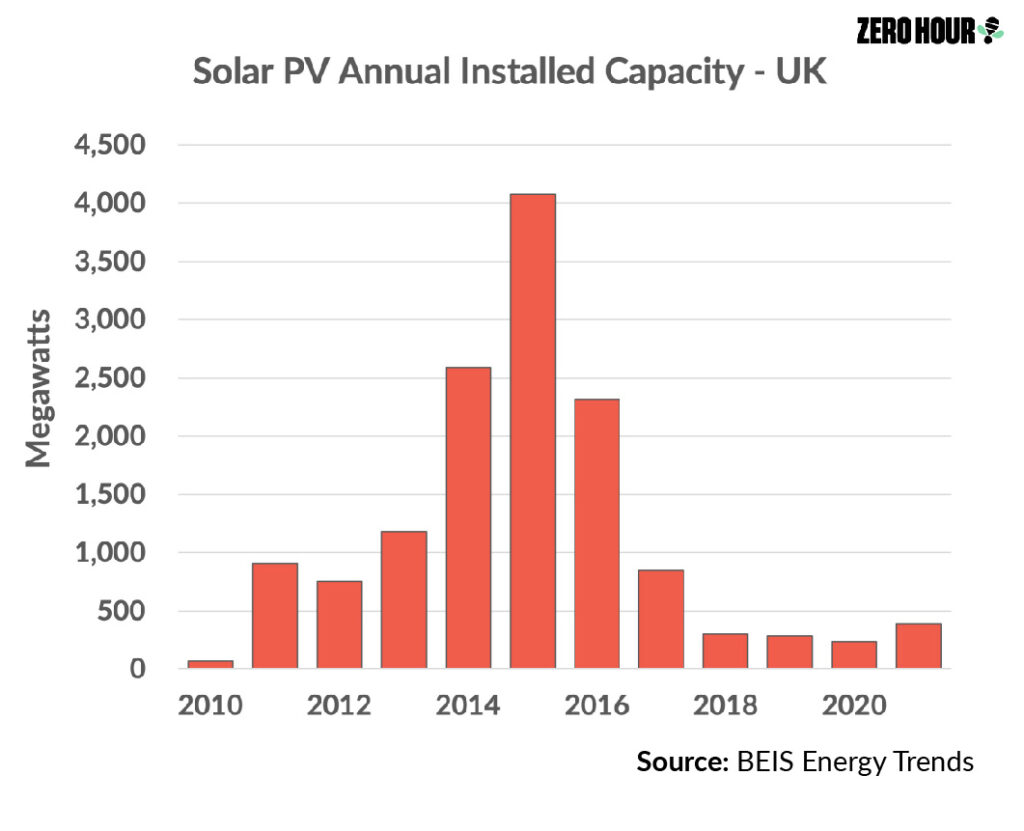
Moving in the wrong direction with renewables – wind
Analysis for wind installed capacity.
Source: BEIS Energy Trends.
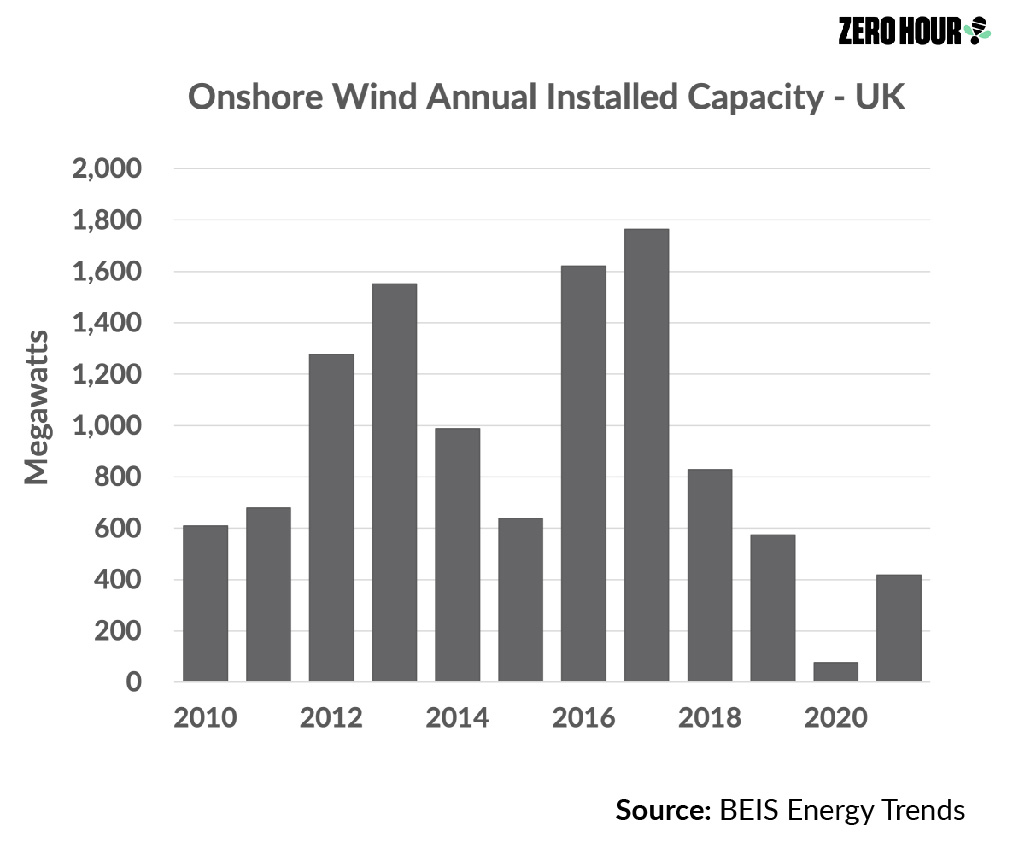
Outside of the power sector progress on emissions reductions has flattened
The IPCC has called for ‘rapid, far-reaching and unprecedented changes in all aspects of society’. But whilst the UK has made some progress in the power sector, progress in all other sectors has pretty much flatlined. You can see the dip caused by covid, but emissions are on the rise again, having grown by almost 5% in 2021.
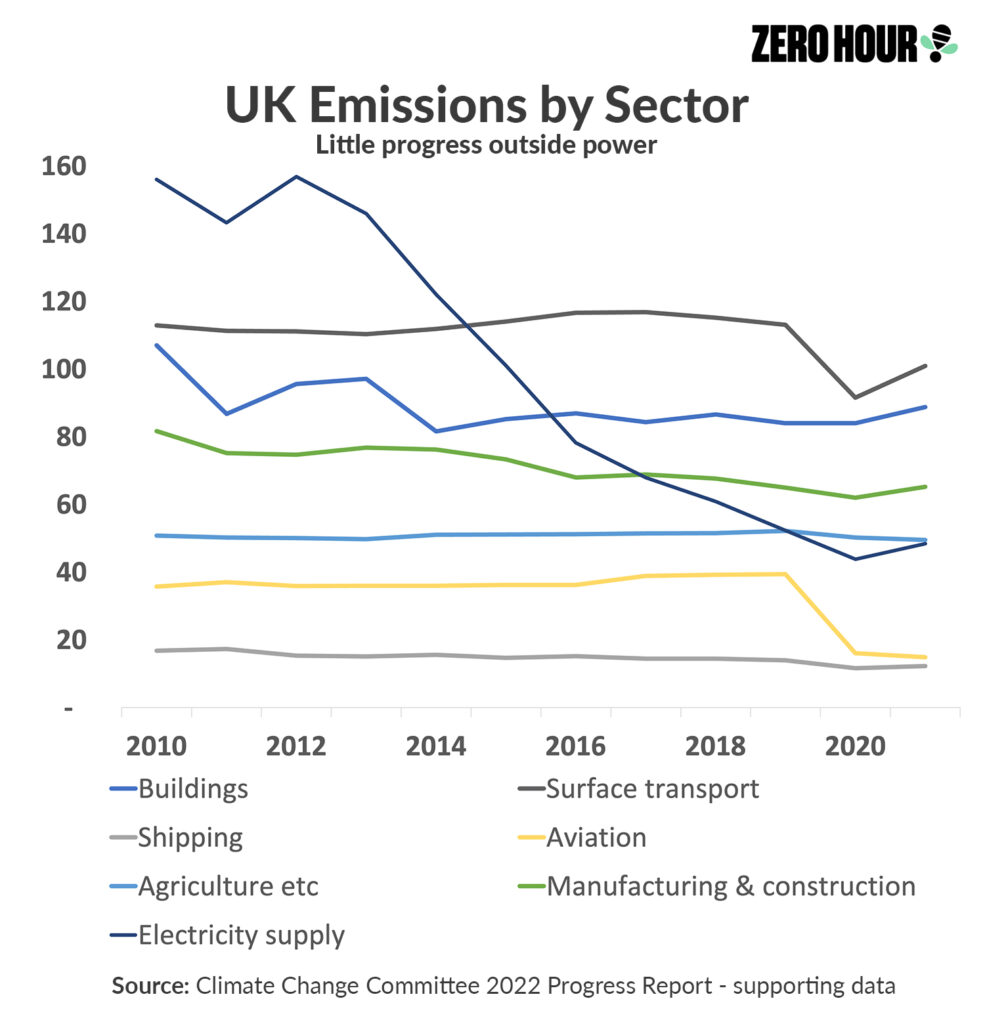
UK emissions plans rely on unproven, discredited technology to remove a huge amount of CO2
UK plans depend on two key technologies to ‘suck’ CO2 out of the air, compensating for ongoing large emissions from agriculture and aviation. These technologies are BECCS (bioenergy with carbon capture & storage) and DACCS (direct air capture with carbon storage). In total, you can see below, that the Government plans for these CO2 removal industries to be operating in 2050 at the same scale as today’s entire manufacturing and construction sector. For example, the UK’s plans for DACCS will require 5 plants the size of the Orca trial plant in Iceland to be constructed every single week from 2020 to 2050. Plainly not feasible. What’s more, the claims by Drax that BECCS will be carbon negative have been comprehensively disproven in numerous studies. And DACCS will actually cause more emissions than it will save until after we have abundant renewable energy – many decades away. After that, it is very likely to have an important role in lowering atmospheric CO2 levels, but it must not be used as a solution to reach net zero. The UK is wasting time, and huge amounts of money, on these false promises. More info and links to the science on pages 19-21 of our Ambition Gap report.
Source: CCC 6th Carbon Budget dataset.
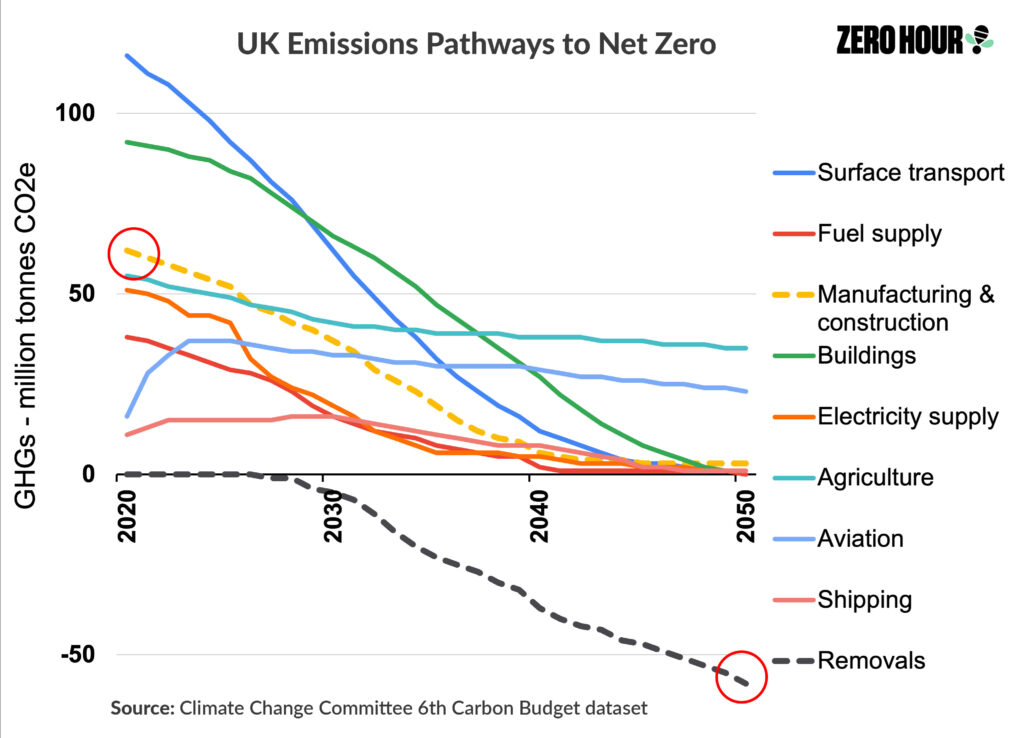
Atmospheric methane levels are rising at record rates
Methane is a very powerful greenhouse gas. It is not given enough prominence in the media given its role in causing 0.5°C of the 1.2°C of global warming seen to date. The NZS sets no individual targets for greenhouse gases other than CO2. Instead, these gases are bundled into a single metric, ‘Greenhouse Gases’, which is expressed in tonnes of CO2 equivalent (CO2e). But other greenhouse gases affect the climate in very different ways, and grouping them together like this misrepresents the impact of powerful shortlived warming gases like methane. Methane only lasts in the atmosphere for around 12 years, yet its heating impact, when incorporated into the combined ‘Greenhouse Gases’ metric, is assessed over 100 years. This outdated metric consequently seriously underestimates the impact of methane over the near term, during which it is vital to avoid crossing tipping points like the melting of large ice sheets, or the loss of the Amazon Rainforest.
The UK has signed up to the Global Methane Pledge to reduce emissions by 30% by 2030, on 2020 levels, but is taking very little action. The UK’s Net Zero Strategy contains some measures to reduce methane and other greenhouse gases, but these are piecemeal, with very little action on agricultural methane emissions—almost 50% of UK methane emissions are caused by livestock.
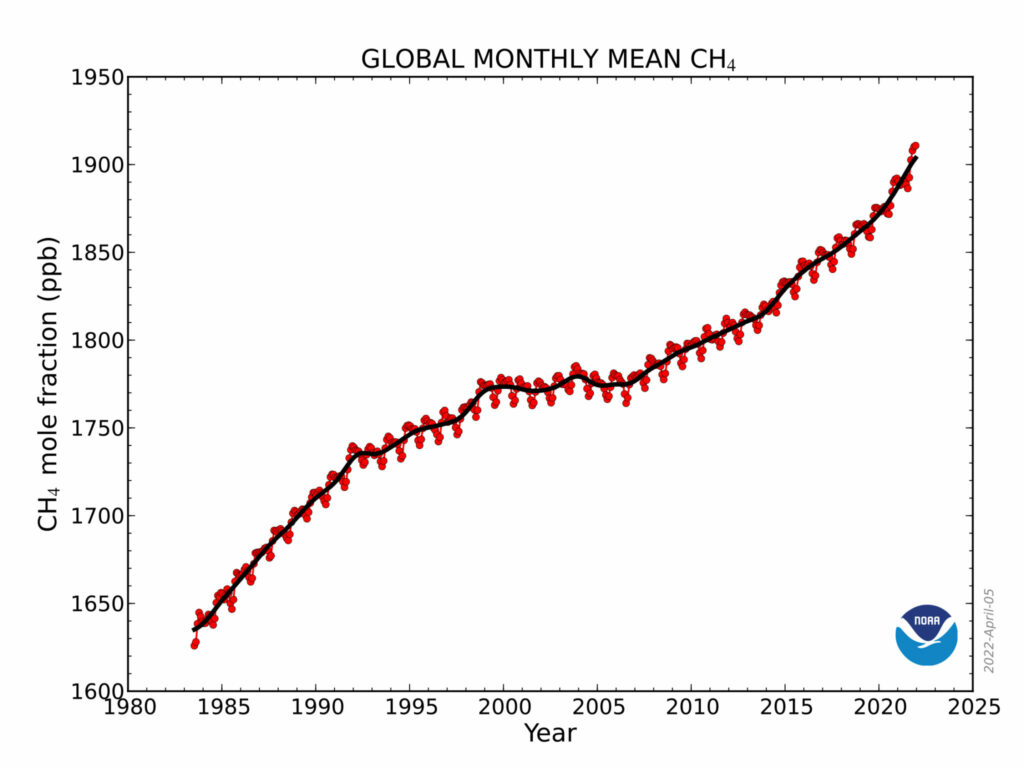
Scientists advise that the UK must reduce its meat consumption
The UK’s Net Zero Strategy acknowledges the need for land use transformation. However, it does not identify the food sector—the biggest user of land—as an integral part in this process. Livestock production is the largest user of land in the UK and globally. There is a growing scientific consensus that a substantial reduction in the production of meat and ultra-processed foods is the key to achieving climate and nature targets, as well as improving public health. This means eating less meat—not necessarily becoming vegan. The important thing is to start marking changes, and fast. But the UK’s Net Zero Strategy does not address meat consumption at all.
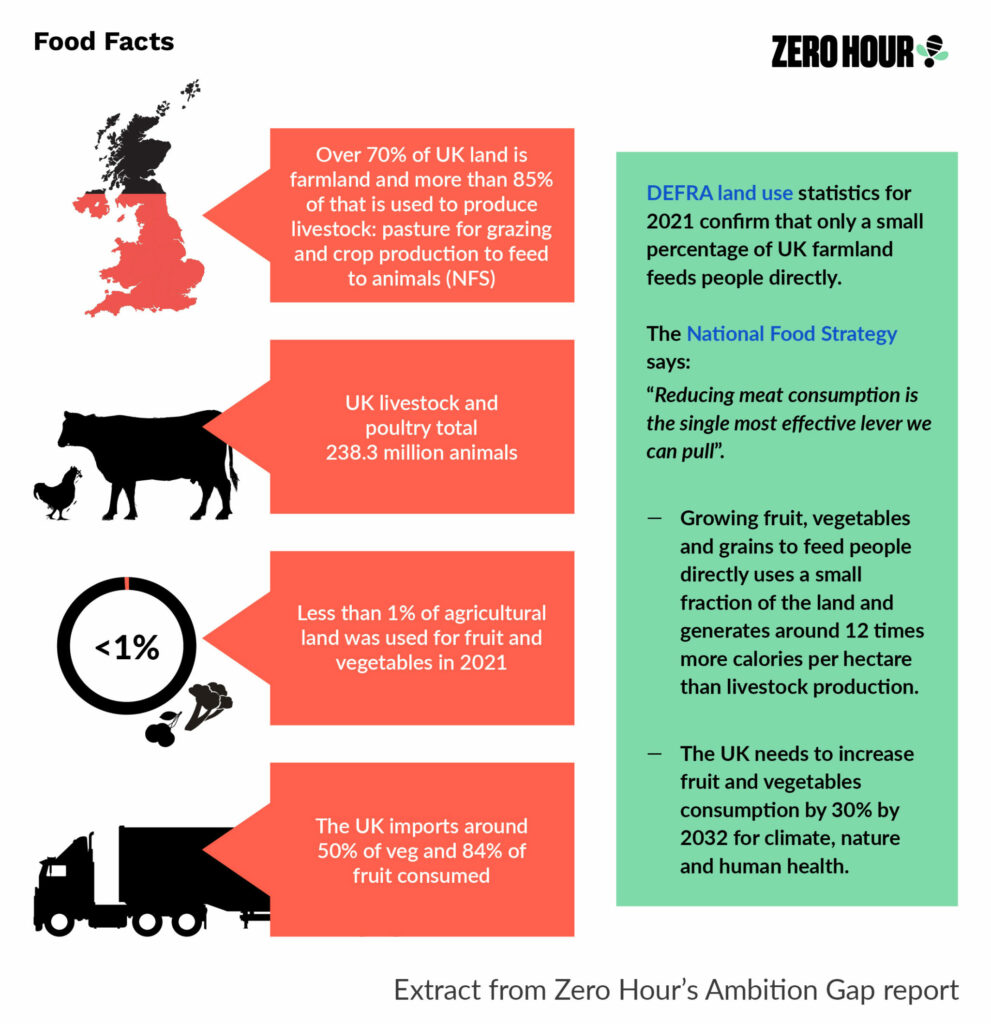
Vast majority of UK land area is used for livestock
Below is an illustration summarising UK land use, from the National Food Strategy, highlighting the scale of agricultural use. It shows that the vast majority of UK land is used to produce livestock, either directly or indirectly growing feed. Defra statistics for 2021 show the breakdown: cattle 9.6 million, pigs 5.3 million, sheep 33 million, poultry 190 million. The total for all livestock on farms is over 238 million animals. The Climate Change Committee has stated that the UK must cut meat consumption by 20% by 2030, yet there are no measures to achieve this in the UK’s Net Zero Strategy.
